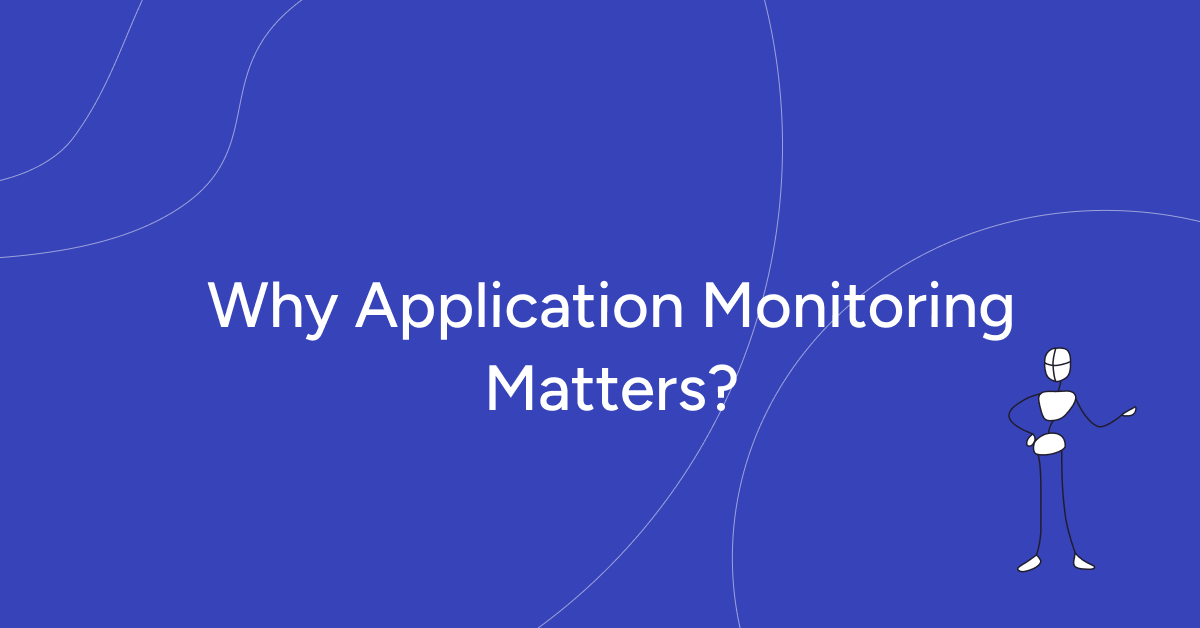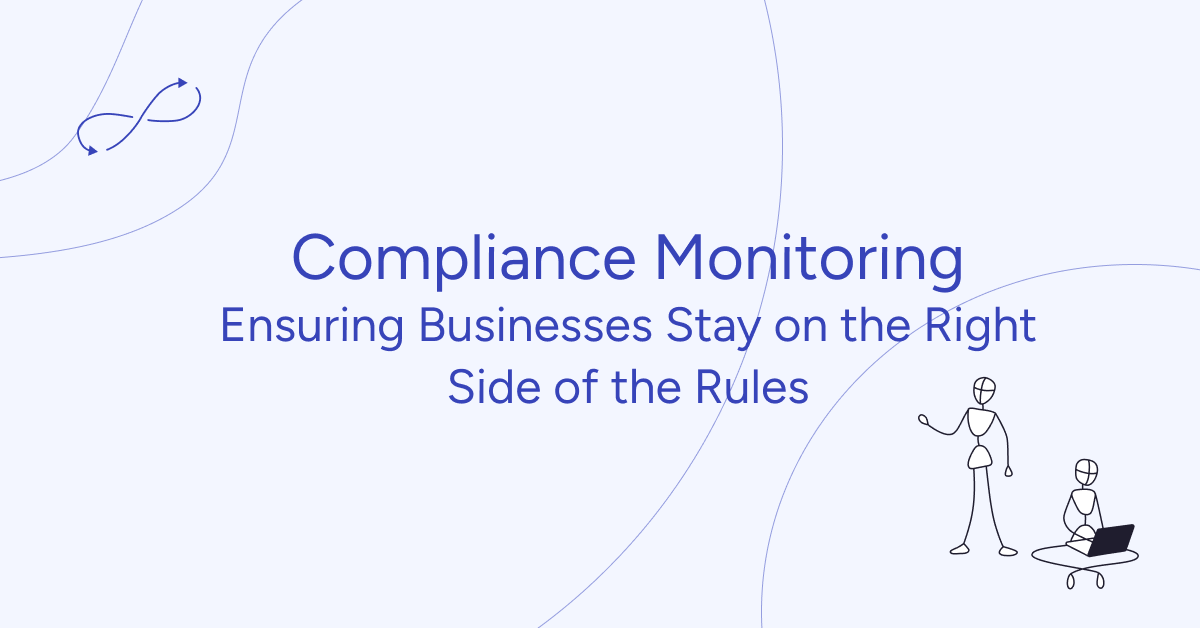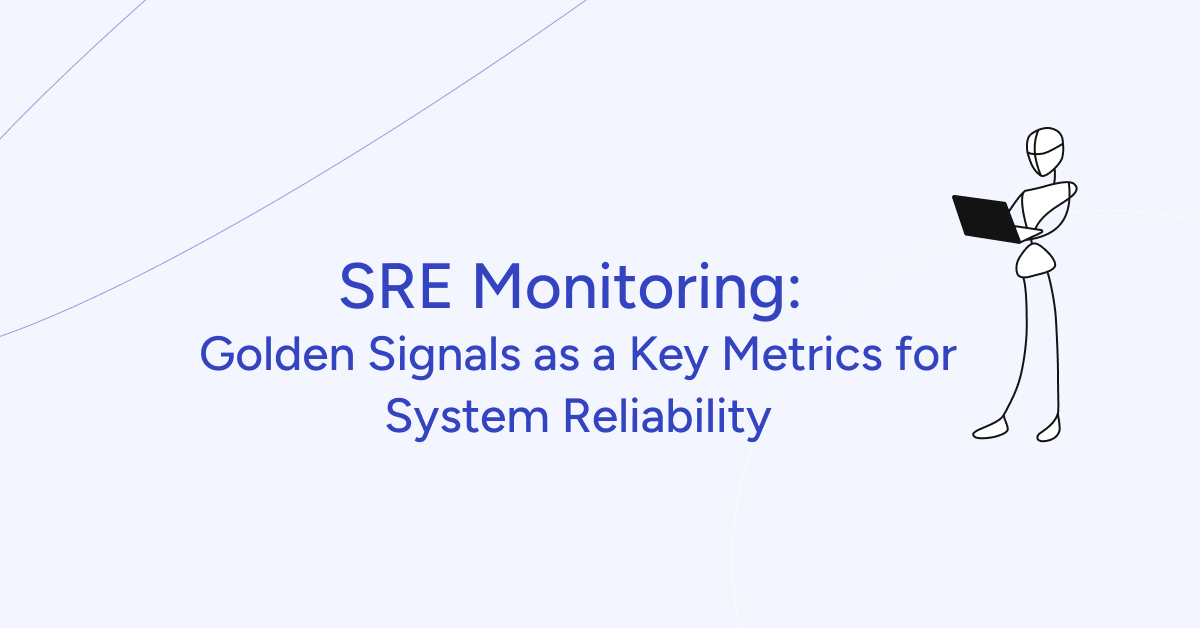What is application monitoring and why is it critical?
Application monitoring tracks the performance, availability, and health of software in real-time. It’s essential for detecting bottlenecks, ensuring uptime, and optimizing user experience, especially in fast-paced DevOps and CI/CD environments. Application monitoring is watching apps to make sure they work well.
Application monitoring is the process of observing, tracking, and analyzing the performance, availability, and overall health of software applications. It plays a crucial role in ensuring the smooth functioning of modern digital systems and services.
The key objectives of application monitoring are to:
- Ensure optimal application performance
- Maintain high availability and reliability
- Identify and resolve issues quickly
Application monitoring has become increasingly vital in the era of DevOps, Agile, and Continuous Integration/Continuous Deployment (CI/CD) methodologies. These practices demand a heightened focus on monitoring to support rapid development cycles, continuous deployment, and the ability to quickly identify and address problems.
Key Challenges in Application Monitoring
One of the major challenges in modern application monitoring is managing the complexity that comes with microservices. Applications today are built using a multitude of microservices that interact with one another, often spanning across different cloud environments. Finding and monitoring all these services can be a daunting task.
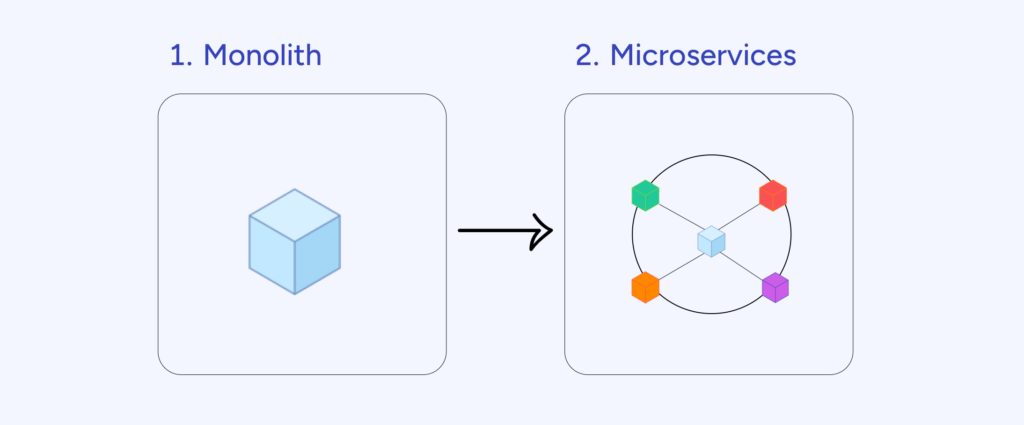
A useful analogy can be drawn from early aviation. Pilots in the past had to rely on their intuition and limited manual tools to interpret multiple signals coming from various instruments simultaneously, making it difficult to ensure safe operations. Similarly, application operators are often flooded with a vast amount of performance signals and data, which can be overwhelming to process. This data overload is compounded by the fact that microservices are highly distributed and can have many dependencies that require monitoring.
Without the right tools, managing all this information can be a bottleneck, just like early pilots struggled with too many signals.
SRE (Site Reliability Engineering) principles streamline the monitoring of complex systems by focusing on the most critical aspects of application performance. Rather than tracking every possible metric, SRE emphasizes the Golden Signals (latency, errors, traffic, and saturation). This approach reduces the complexity of analyzing multiple services, allowing engineers to identify root causes faster, even in microservice topologies where each service could be based on different technologies. The key advantage is faster detection and resolution of issues, minimizing downtime and enhancing the user experience.
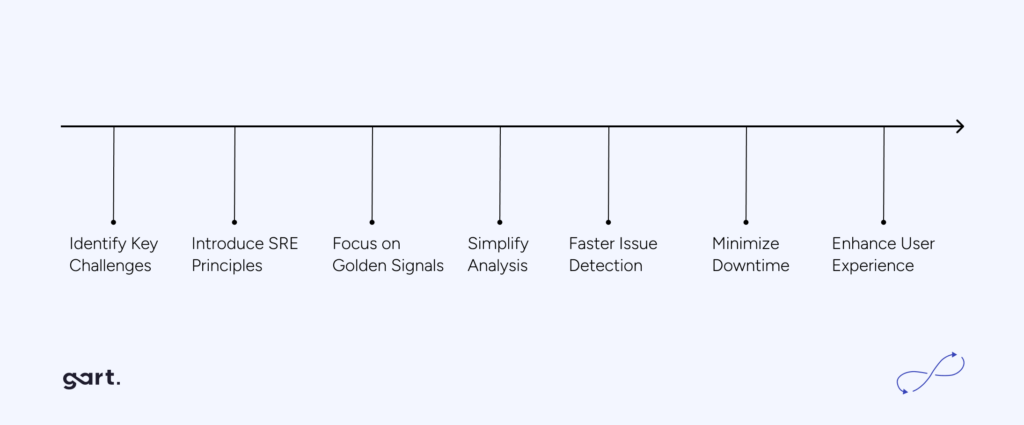
Types of Application Monitoring
Application monitoring encompasses a range of techniques and tools to provide comprehensive visibility into the performance, availability, and overall health of software systems. Some of the key types of application monitoring include:
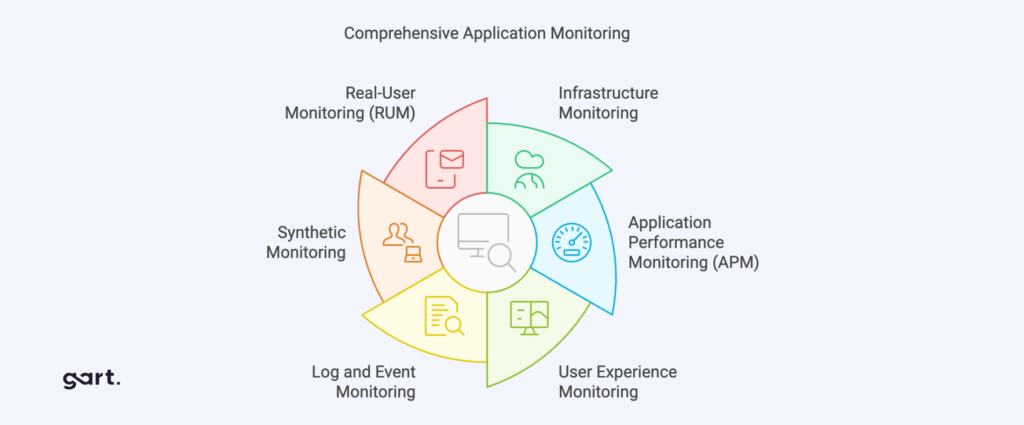
Infrastructure Monitoring
This involves monitoring the underlying hardware, virtual machines, and cloud resources that support the application, such as CPU, memory, storage, and network utilization. Infrastructure monitoring helps ensure the reliable operation of the application’s foundation.
Application Performance Monitoring (APM)
APM focuses on tracking the performance and behavior of the application itself, including response times, error rates, transaction tracing, and resource consumption. This allows teams to identify performance bottlenecks and optimize the application’s codebase.
User Experience Monitoring
This approach tracks how end-users interact with the application, measuring metrics like page load times, user clicks, and session duration. User experience monitoring helps ensure the application meets or exceeds customer expectations.
Log and Event Monitoring
Monitoring the application’s logs and event data can provide valuable insights into system behavior, errors, and security incidents. This information can be used to troubleshoot problems and ensure regulatory compliance.
Synthetic Monitoring
Synthetic monitoring uses automated scripts to simulate user interactions and measure the application’s responsiveness, availability, and functionality from various geographic locations. This proactive approach helps detect issues before they impact real users.
Real-User Monitoring (RUM)
RUM tracks the actual experience of end-users by collecting performance data directly from the user’s browser or mobile device. This provides a more accurate representation of the user experience compared to synthetic monitoring.
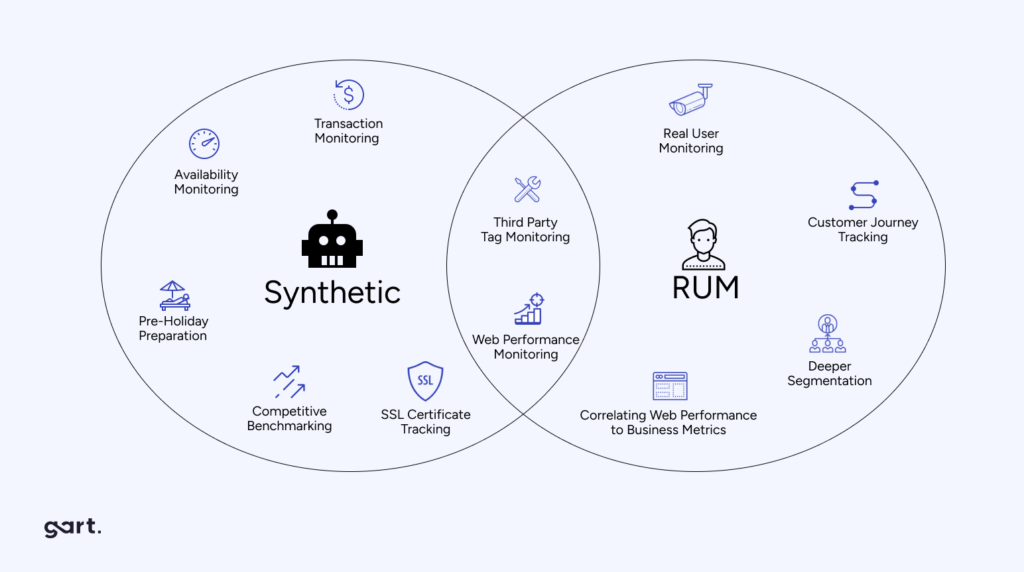
Key Metrics for Application Monitoring
Effective application monitoring relies on a comprehensive set of metrics that provide insights into the performance, availability, and overall health of the system. Some of the key metrics to track include:
Performance Metrics
Response time: The time it takes for the application to respond to user requests
Throughput: The number of requests or transactions processed per unit of time
Resource utilization: CPU, memory, and network usage by the application and its underlying infrastructure
Availability Metrics
Uptime/Downtime: The percentage of time the application is available and functioning as expected
Error rate: The number of errors or exceptions occurring within the application
Latency: The time it takes for the application to respond to requests
User Experience Metrics
Page load time: The time it takes for pages to load and become interactive
User sessions: The number of active user sessions and their duration
Bounce rate: The percentage of users who leave the application without interacting further
Business Metrics
▪️ Revenue: The financial impact of the application, such as sales, subscriptions, or in-app purchases
▪️ Conversion rate: The percentage of users who complete a desired action, such as making a purchase or signing up for a service
▪️ Customer satisfaction: Measures like Net Promoter Score (NPS) or user reviews
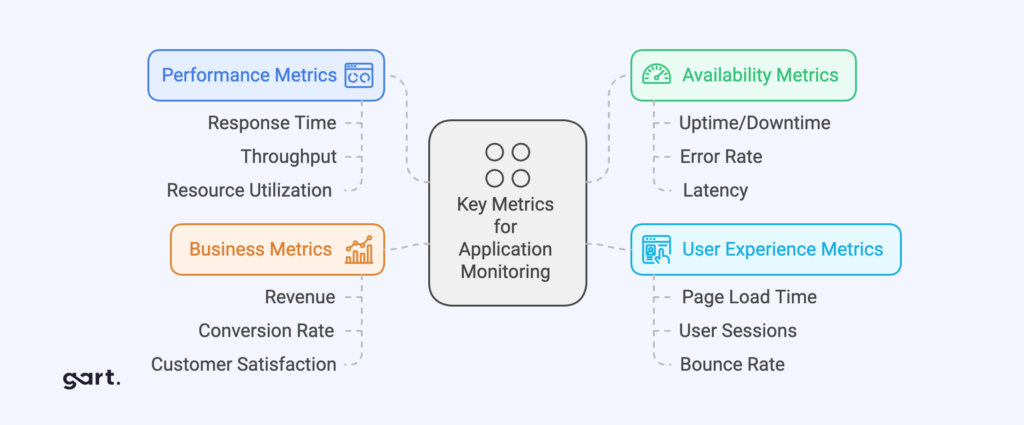
Tools for Application Monitoring
Effective application monitoring requires the use of specialized tools and platforms. Some of the popular options include:
Application Performance Monitoring (APM) Tools
- New Relic: Provides comprehensive APM, infrastructure, and user experience monitoring
- Datadog: Offers a suite of monitoring and analytics tools for applications, infrastructure, and cloud environments
- AppDynamics: Focuses on transaction tracing, root cause analysis, and application performance optimization
Open-Source Monitoring Tools
- Prometheus: A powerful time-series database and monitoring system for cloud-native applications
- Grafana: A highly customizable data visualization and dashboard platform, often used in conjunction with Prometheus
- Nagios: A widely-adopted open-source tool for monitoring systems, networks, and applications
Log Management Tools
- ELK Stack (Elasticsearch, Logstash, Kibana): A popular open-source solution for log aggregation, analysis, and visualization
- Splunk: A commercial platform for collecting, indexing, and analyzing machine data, including application logs
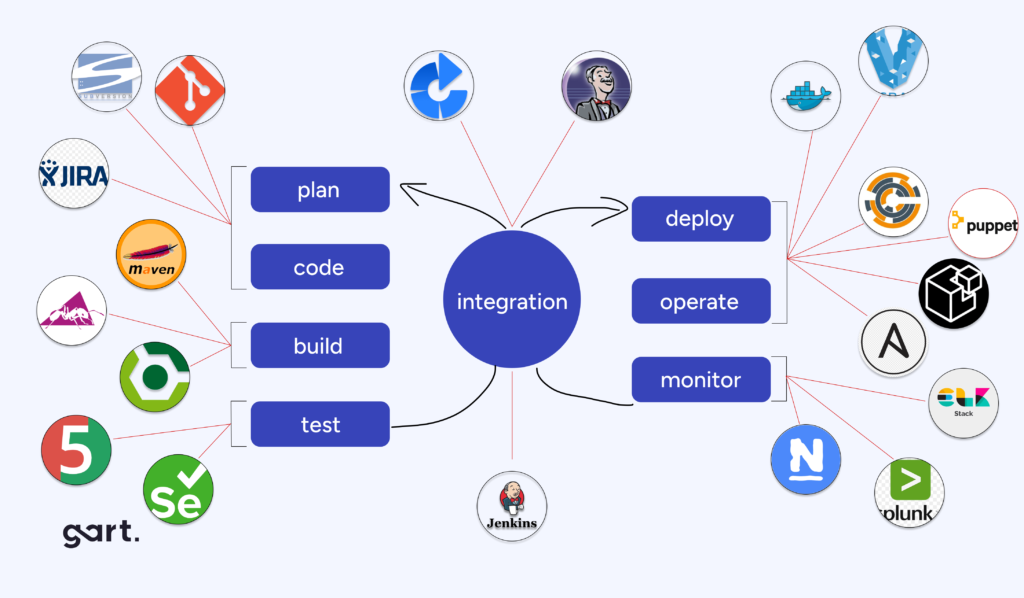
When choosing application monitoring tools, organizations should consider factors such as:
Scalability: The ability to handle increasing volumes of data and support growing infrastructure
Budget: Both the initial cost of the tool and the ongoing operational expenses
Integration: The ease of integrating the monitoring solution with the existing software stack and tools
Best Practices in Application Monitoring
Effective application monitoring requires a strategic approach and the adoption of best practices. Some key recommendations include:
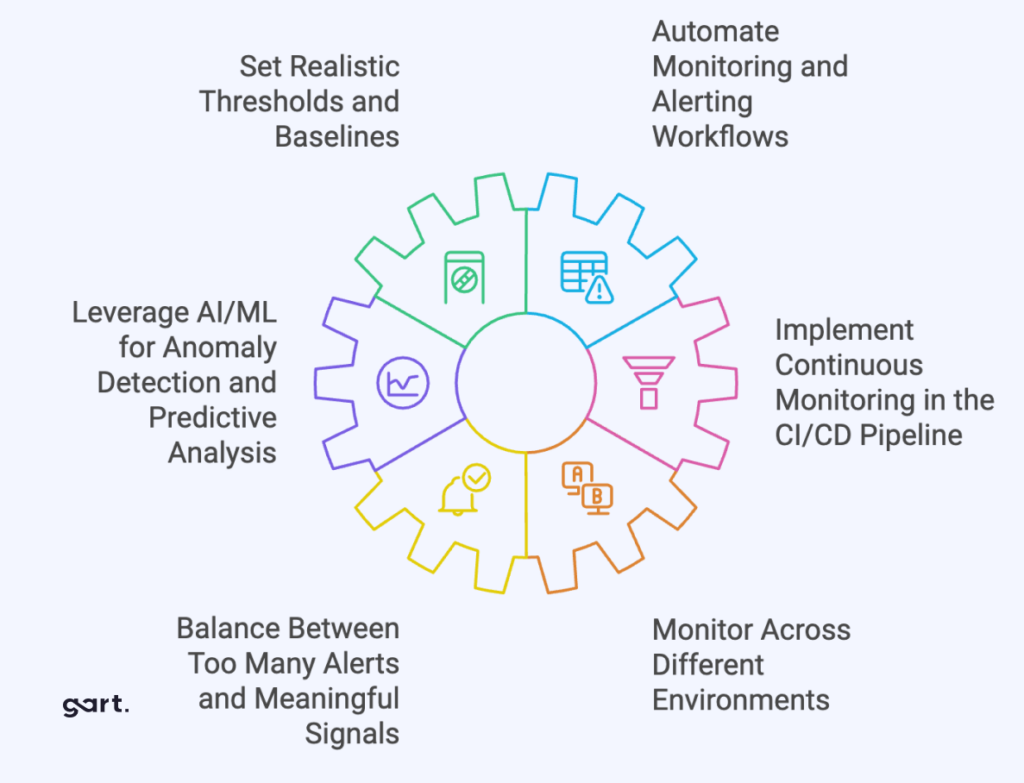
Set Realistic Thresholds and Baselines
Establish meaningful performance thresholds and baseline metrics for your application, taking into account factors such as user expectations, industry standards, and historical trends.
This helps ensure that monitoring alerts are triggered only for significant deviations from normal operation.
Automate Monitoring and Alerting Workflows
Leverage automation to streamline the monitoring and alerting processes. This includes automatically configuring monitoring tools, setting up alert triggers, and integrating monitoring data with incident management and collaboration tools.
Leverage AI/ML for Anomaly Detection and Predictive Analysis
Utilize advanced analytics and machine learning techniques to identify anomalies, predict performance issues, and proactively address problems before they impact users.
Implement Continuous Monitoring in the CI/CD Pipeline
Integrate monitoring into the continuous integration and continuous deployment (CI/CD) process, ensuring that application performance and reliability are validated at every stage of the software delivery lifecycle.
Balance Between Too Many Alerts and Meaningful Signals
Carefully design your monitoring and alerting strategy to strike a balance between overwhelming the team with too many alerts and ensuring that the most critical issues are surfaced promptly.
Monitor Across Different Environments
Extend your monitoring capabilities to cover the application across different environments, including development, staging, and production. This provides a holistic view of the application’s performance and helps identify inconsistencies or regressions.
Optimize Your Application Performance with Expert Monitoring
Is your application running at its best? At Gart Solutions, we specialize in setting up robust monitoring systems tailored to your needs. Whether you’re looking to enhance performance, minimize downtime, or gain deeper insights into your application’s health, our team can help you configure and implement comprehensive monitoring solutions.
Take a look at these two recent cases that illustrate our expertise in this area:
Centralized Monitoring for a B2C SaaS Music Platform:
We developed a real-time infrastructure and application monitoring solution using AWS CloudWatch and Grafana for a global music platform. This solution provided scalable monitoring across multiple regions, enhanced system visibility, reduced downtime, and improved operational efficiency. The result was a cost-effective, user-friendly monitoring system that ensured future growth and expansion.
Monitoring Solutions for Scaling a Digital Landfill Platform:
We created a universal monitoring system for the elandfill.io platform, successfully scaling it across countries like Iceland, France, Sweden, and Turkey. This solution improved methane emission predictions, optimized landfill management, and simplified compliance with regulatory requirements. The cloud-agnostic approach also ensured flexibility in cloud provider selection for the client.
Ready to elevate your app’s performance? Contact Gart Solutions today to get started with personalized application monitoring that ensures your system runs smoothly and efficiently. Let us help you stay ahead of issues before they impact your users.
See how we can help to overcome your challenges

